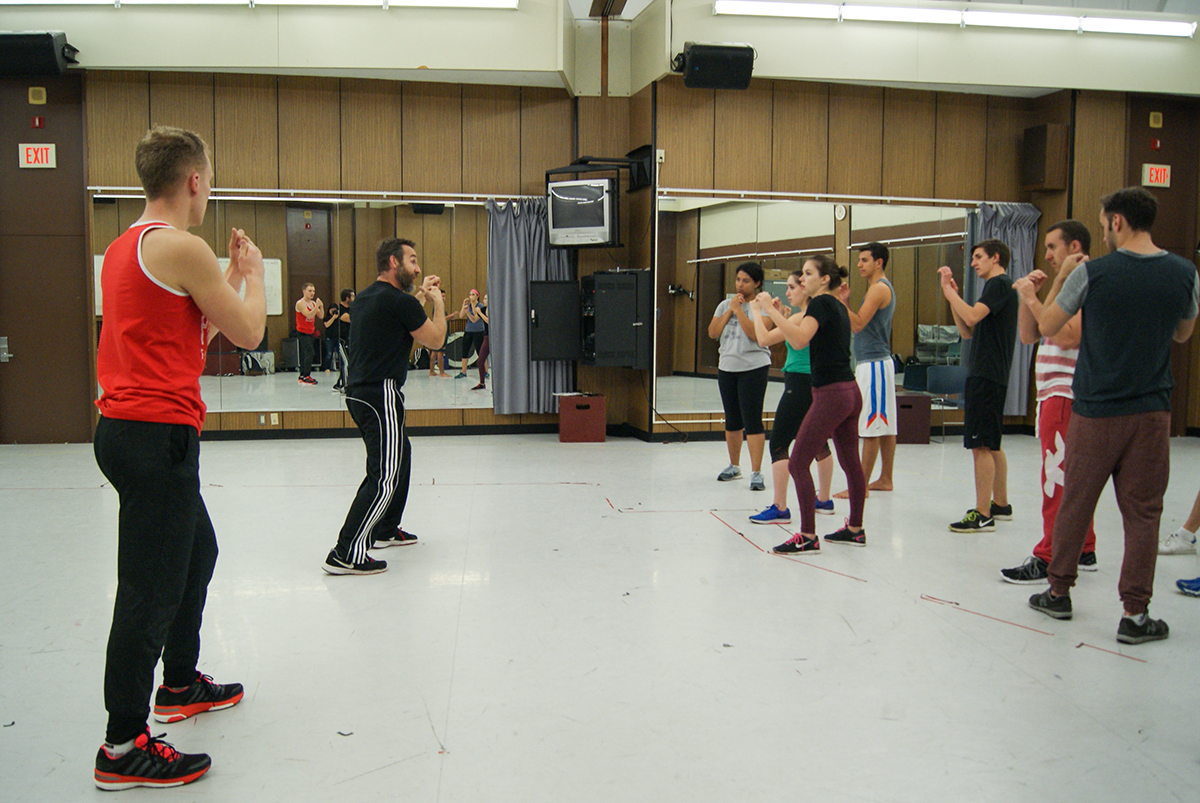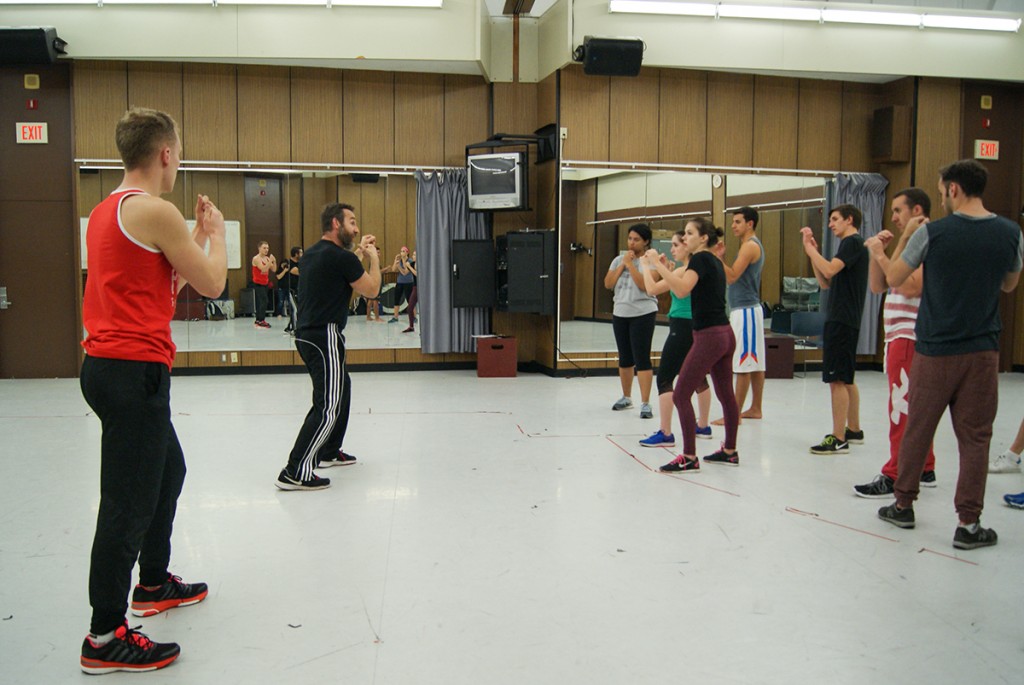

It’s a typical day in Professor Lee Soroko’s class, where students are seen dropping to the floor and engaging in intense slaps, punches and kicks. Using his training as a professional actor, Soroko teaches stage combat in the Department of Theatre Arts.
In his stage combat class, Soroko shares the technique of using safe and repeatable violence to tell a story in a way that is believable to the audience. This, he says, is key to heightening the theatrical experience and keeping the audience interested in the action.
“It’s not violence for the sake of violence … violence is a tool, and all the great playwrights use violence, as it needs to make the ultimate point of the action,” he said. “We want the action to heighten the experience and the emotional journey that we’re taking with the characters on stage.”
Soroko sees his classes as fun and explorative, providing students the opportunity to learn how to use their bodies and weapons for performances. They learn techniques like punching and slapping in a realistic form without making contact. Other lessons include the element of touch and how to use their bodies to drop to the floor. In the more advanced sections, weapons like swords, shields and knives are used as students learn how to portray pain when these foreign objects enter the body.
“We use those weapons to further express character and need,” he said. In acting, he explained, it’s about making someone feel on the outside what the character feels internally.
Soroko’s own experience in fighting and theater performance began in college, when he was part of the college karate team and also did fencing. Because of these experiences, Soroko’s professor asked him to choreograph fight scenes for a “Romeo and Juliet” performance in which he was cast.
He later attended graduate school, where he took stage combat classes, gained more experience and was cast in “Romeo and Juliet” again. The director of the production encouraged Soroko to train with him and the Society of American Fight Directors. After applying for his teaching certification, he decided to transition into education as a professor along with his wife April, who also joined UM as associate professor of scenic design and resident scenic designer at the Ring Theater.
Senior Brian Reiff, a musical theater major, said he decided to take Soroko’s stage fighting class because of a longstanding interest in that type of performance.
“Stage fighting has always been interesting to me since I first saw the knife fight in ‘West Side Story’ when I was a kid at my local theatre,” he said. “Learning how to successfully punch someone across the face on stage as well as learning how to stab myself has been the best part of stage combat.”
When he’s not teaching how to navigate the world of weapons for performance, Soroko helps law students master their presentation by teaching litigation skills at the School of Law. Using his experience in theater and performance, Soroko helps the students navigate storytelling in their roles.
“This is an opportunity for lawyers or would-be lawyers who are really great at understanding the law, but what they don’t understand is how you get in front of a jury and tell a story, he said. “This is where the law and theater performance interconnect.”
By critiquing the presentation of lawyers not from a law standpoint but from a performance standpoint, he ensures that his students are articulate in their presentations throughout the entire series of events.
“You are no longer presenting an idea. When you’re in front of a jury, it’s a heightened theatrical experience,” Soroko said. “Facts are boring; however, a story is dynamic. A story is interesting.”





